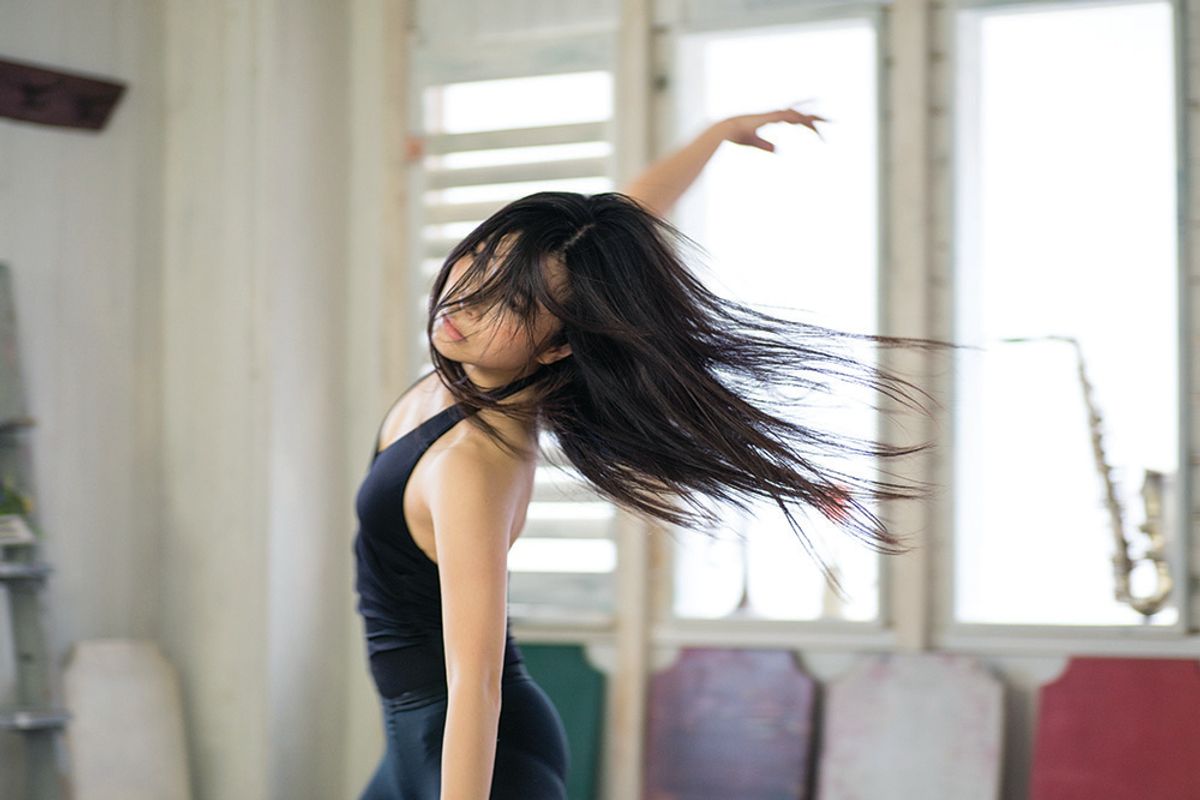
When I went back to school last fall to earn my MFA, I was surprised by how much dance in higher education had changed since my undergraduate experience 10 years before—and how much it hadn’t. Diasporic dance forms, such as African and hip hop, for example, are now much more integral to curriculums, but ballet and modern still take precedence. Students are now more interested in somatic practices, yet teachers have moved away from cuing or correcting students by touch.
Traditional curriculum that emphasizes Western European dance and separates the path of teaching from that of performance may be deeply ingrained in academia, yet there are many signs of progress to note throughout the field. Here, faculty members of three colleges explain how they are evolving their offerings to better meet the needs of today’s dancers.
Preparing Grad Students for More Than One Path
In 2018, the first dual MA/MFA student graduated from both the Steinhardt School of Culture, Education, and Human Development and the Tisch School of the Arts at New York University. She left equipped with a unique strength: She was certified to teach full-time in the New York K–12 sphere and qualified for jobs in the higher ed sector. Deborah Damast, who directs the Steinhardt program, thinks of this degree as a contingency plan of sorts. “Oftentimes, we don’t really know where our lives are going to take us—whether we pursue a career in leadership or education or performance,” she says. “So while you may enter a [graduate] program thinking one thing, suddenly, a few years later, something else may present itself.”
Rachel Rizzuto: What was the reasoning behind combining the MA and MFA into one degree?
Deborah Damast: There’s this traditional chasm between the professional performing career and the education track. People often have a lot of questions when they’re thinking about getting master’s degrees. “Do I go into an MA program that focuses on educating K–12 teachers and those who want to work in the private sector? Or do I go into the MFA, which hones your performance and artistry, with a terminal degree to teach in higher ed?” The idea was to give people the full option—you’re getting pedagogy research and artistry within these two programs that have been morphed into one.
RR: As someone in an MFA program right now, I understand how stressful and time-consuming it can be. How do your students manage the load of this program?
DD [laughs]: We’re trying to keep them from exploding their brains! Both programs had to compromise. We had many talks between program directors, administrators, the registrar, deans, in terms of what is essential and what’s potentially overlapping. We wanted to make sure we weren’t giving the same content. We were able to create a 72-credit program. Certain opportunities—performances, our outreach company—are optional. It’s a fine and well-oiled machine, but it’s not as flexible as some master’s programs that have a number of electives.
RR: How has the curriculum evolved, now that you’ve had a graduate and your cohorts are three or four people strong?
DD: Any good program is self-reflective. As much as we can, the directors of both of these programs get together and talk. And sometimes it’s the students coming to us and saying, “We’d like to try this—is this possible?” That’s the reason they were allowed to be a part of our study abroad program—because of student requests. They really advocated for that. There’s been some shifts in terms of performance opportunities, outreach opportunities, how much teaching is done, and also just scheduling. Student voices will be really important to help guide this program.
Diversifying Technique Class
Despite the decades-long reign of ballet- and modern-focused curriculums, some schools, like Connecticut College, are working to change the historically Western European technique model. They’re offering classes in other techniques regularly and giving them the same weight in their curriculums as ballet and modern. “We want our students to know that there are several techniques out there,” says Shani Collins-Achille, dance department chair. “We want them to really thrive and feel empowered and educated and informed as they move.”
RR: Tell me about the big curriculum change you’re offering for first- and second-year students this coming fall.
Shani Collins-Achille: Within the dance department, it used to be that students took dance four or five days a week, alternating between ballet and modern. One of the systemic curricular things we’re slowly trying to chip away at is that model of ballet and modern. So now instead of ballet and modern classes five days a week, we’re trying a gateway course, where they’ll float through many different techniques every week or two weeks. They’ll take yoga, they’ll have West African, they’ll have Afro-contemporary, they’ll have Afro-Caribbean, they’ll have good ole postmodern dance. We want to get students exposed to the new. And we want to break down the hierarchies of where dance happens and who can do it.
RR: What prompted this change?
SCA: It was the nowness—the inequities that we see in our field, in terms of Africanist forms not being validated or sometimes even seen as primitive, not as techniques. That was the impetus to be able to give students mobility through what is currently a fixed system that doesn’t allow them to have the body knowledge of these other forms.
RR: Do you have overarching goals for the future of the dance department at Connecticut College?
SCA: Our big goal is creating an anti-racist curriculum. Truth Hunter, who is an expert on critical race theory, has been working with our faculty on inequities inside of the liberal arts—debunking racialized notions of intelligence. In a liberal arts school, and in the dance world, we can get a little “touchy-feely” and not really have critique around the system that we’re inside of. She’s helping us flex our muscles. We’re hoping it will trickle through. It already has, in terms of course offerings and what’s included in syllabi. We’re trying to work on ourselves so that we can model a healthy, mutually respective environment for our students.
Linking Somatics and Technique
Though somatic practices—Pilates, yoga, Alexander Technique—are becoming more common in dance curriculums, there’s often a clear divide between somatics and technique class. At Sarah Lawrence College, however, the two work in tandem. Faculty members work one-on-one and in small groups with students to identify issues that crop up in a technique class (a weak core, for example) and then employ strategies from Pilates, functional anatomy and neuromuscular training to troubleshoot those issues. “A lot of students who I see need to figure out how to stabilize themselves and move from a stronger place,” says Eleanor Hullihann, who has taught both conditioning class and dance practice conference, where she sees students individually. Though dance practice conferences have been a part of the curriculum for the past 16 years, thanks to faculty member Peggy Gould, the conditioning class was just added two years ago, after John Jasperse took over as director of the dance program.
RR: How do the conditioning and dance practice conference classes operate?
Eleanor Hullihan: For dance practice, in the beginning of the semester, I observe technique classes and take notes on the students. I assess what I feel like is a baseline weakness in their technique or practice that they’ll then work on with me. Maybe I see this student struggling with ankle stability, but what’s really going on? Maybe they don’t have stability in their pelvis, or it could come from abdominal strength. When the student comes in, we discuss what they feel they’re working on in technique, so I get a bigger picture of what they’re doing.
The conditioning class is a Pilates- and injury-prevention–based class for dancers. A lot of what we work on is understanding anatomy, some breathing work, how to connect to your body on a deeper level in order to find stability and connect your brain to how your body is organizing itself.
RR: Have you seen a decrease in injury since implementing these courses?
Peggy Gould: I think the injury rate and the ability to attend to injury generally has gone down. Over the long run, these classes have definitely given dancers much greater investment in the pragmatic, in the technical. They’re actually paying attention and taking care of what they need to in order to do the dance style that they want to do. The thing about these dance practice conferences is that students have a partner—a teacher, who’s tracking them.
RR: What kinds of overarching effects do you see these courses having on the students?
John Jasperse: We’re different things for different people in this program. We have a graduate program, which is 100 percent dedicated to people going into the field. We have a tradition of producing undergraduates who have made major impacts in the field. But we also have this undergraduate population who wants to continue dancing but doesn’t necessarily see themselves wanting to go into the field. Even though that population sees this work in a different way, we’re generating a very holistic and full understanding of the process of dancing. This kind of work bridges cognitive and experiential knowledge that can be applied to movement practice with a little more precision or awareness of how the physical instrument actually functions.





